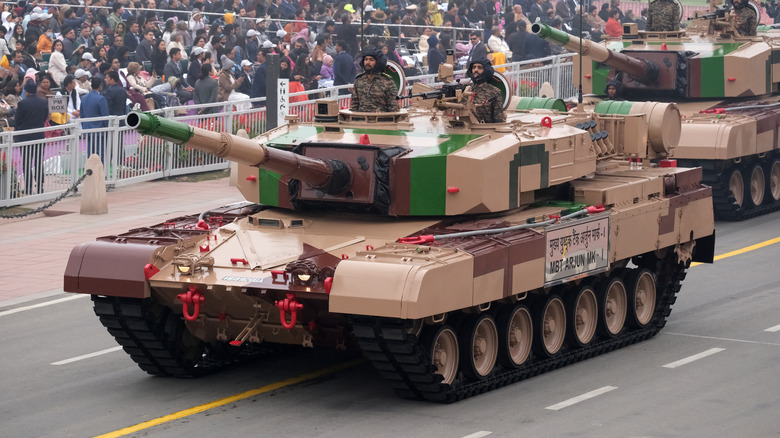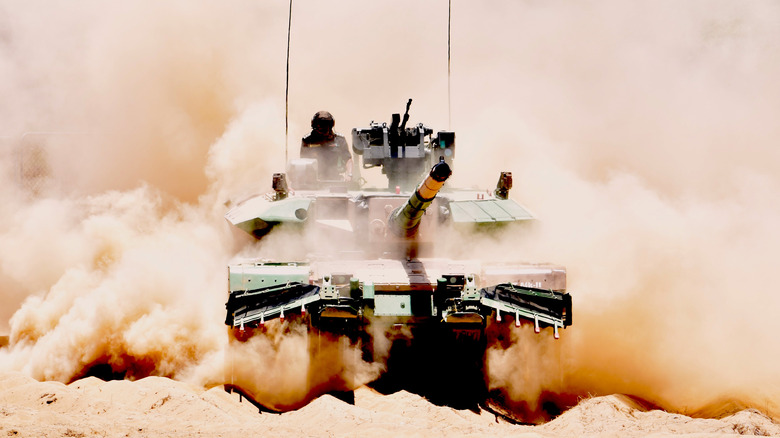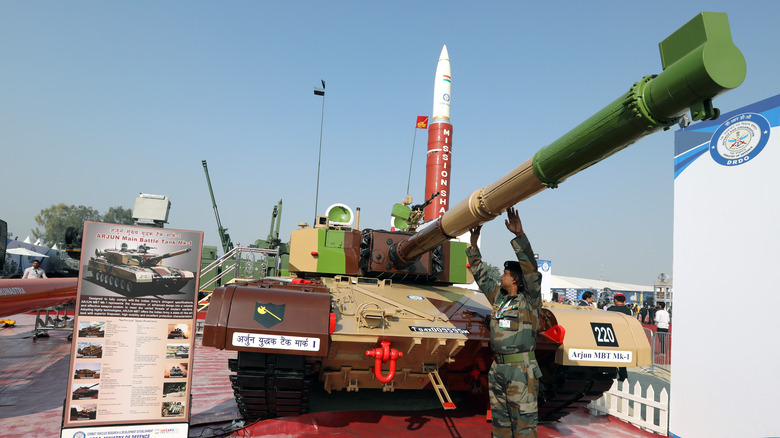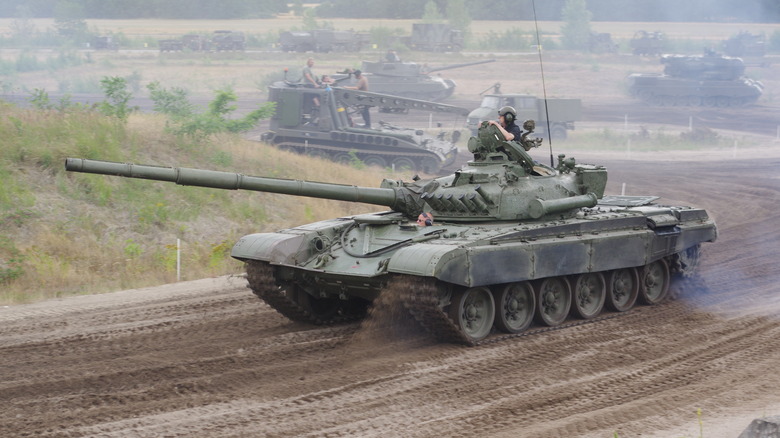Everything To Know About The Indian-Made Arjun Main Battle Tank
While India's army has employed Soviet-designed T-72 tanks since the '80s, it has struggled to manufacture its own main battle tank (MBT) for five decades. Development began after the 1971 Indo-Pakistani war. The Defense Research and Development Organization (DRDO) in charge of technology development for the Indian military established a new department in 1975. The Combat Vehicles Research and Development Establishment (CVRDE) was tasked to produce a homegrown Indian MBT.
The CVRDE named the new MBT design Arjun, after Arjuna, the warrior protagonist of India's national epic "Mahābhārata." Creating a fully functional tank from scratch with locally manufactured components wasn't a simple process. The entire project suffered delays, defects, and cost overruns, postponing the release of its prototype and first operational model along with significantly increasing its price tag.
While the Indian army purchased 124 Arjun MBTs in 2009 and 118 of its upgraded variant in 2015, the final product came nowhere close to what the CVRDE had hoped for it. They eventually turned to a neighboring nation to stock its armored corps.
Production of the Arjun MBT has been a struggle
Arjun development was a lengthy process, with CVRDE finally delivering its prototype in 1989. However, due to a series of defects, including overheating engines and poor weapons system performance, the Arjun only entered full-scale production in 1996.
The CVRDE intended for the Arjun MBT to feature components manufactured in India, including its armor and running gear. Unfortunately, this only extended the craft's production timeline and eventually forced its developers to use about 30% of imported components. The tank wasn't fully ready for mass production until 2009 and even then, it exhibited multiple technical flaws. However, that didn't stop the Indian Army from purchasing 124 tanks.
By the time 2015 rolled around, Defense News quotes an Indian official that the army had grounded 75% of those 124 tanks. The same official went on to say that there were over 90 different issues, noting, "The problems in the Arjun tank are mainly confined to its transmission system, targeting, and thermal sights." Interestingly, the source blamed the issues on imported components, not those built in India.
The tank's armament and current status
Weighing between 58 and 67 tons depending on configuration and outfitted with a 120mm main rifled gun, the Arjun MBT is a heavy-duty tank. The Arjun also sports an anti-personnel 7.62mm coaxial machine gun and a 12.7mm anti-aircraft machine gun also suited for ground targets. In addition to its suite of weapons, the Arjun has advanced composite armor and ergonomic elements to maximize the ease of long-term use.
Ironically, long-term use may not be in the Arjun's future, at least in Indian service. Ongoing mechanical struggles and supply chain issues have left much of India's military fed up with the Arjun. Even we named the Mk-1 version one of the worst military tanks ever built. When the Indian military placed an order for 118 upgraded Mk-1A variants, they acknowledged it would likely be their last. Now, the Indian army is looking to export its indigenously-built MBT to various African countries, with a defense official telling EurasianTimes, "India has spent both time and resources in developing the MBT. Its export seems only logical to keep the production line running."
India turned to Russia
In the end, while the Arjun is still technically part of India's military, its armored vehicle role is now largely filled with a Russian tank. India has bought several hundred Russian T-90 MBTs, another one of the most expensive tanks ever built. The T-90 is one of the few third-generation MBTs to see action on the battlefield, serving in Syria and Ukraine.
Not only is the T-90 a functional tank, equipped with a 125mm 2A46 smoothbore main gun and a 1A45T fire-control system, but, per The Wire, it's a significantly cheaper MBT than India's homegrown Arjun. The Arjun MBT came with a price tag of $9.77 million per unit as opposed to the T-90's maximum $2.5 million per unit. That's a bargain. India also has history operating Russian MBTs, as the country originally began the Arjun project to phase out its arsenal of Russian T-54 tanks. While those have all been retired, India still has 2,148 T-72 tanks in operation, complementing its new order of T-90s.



